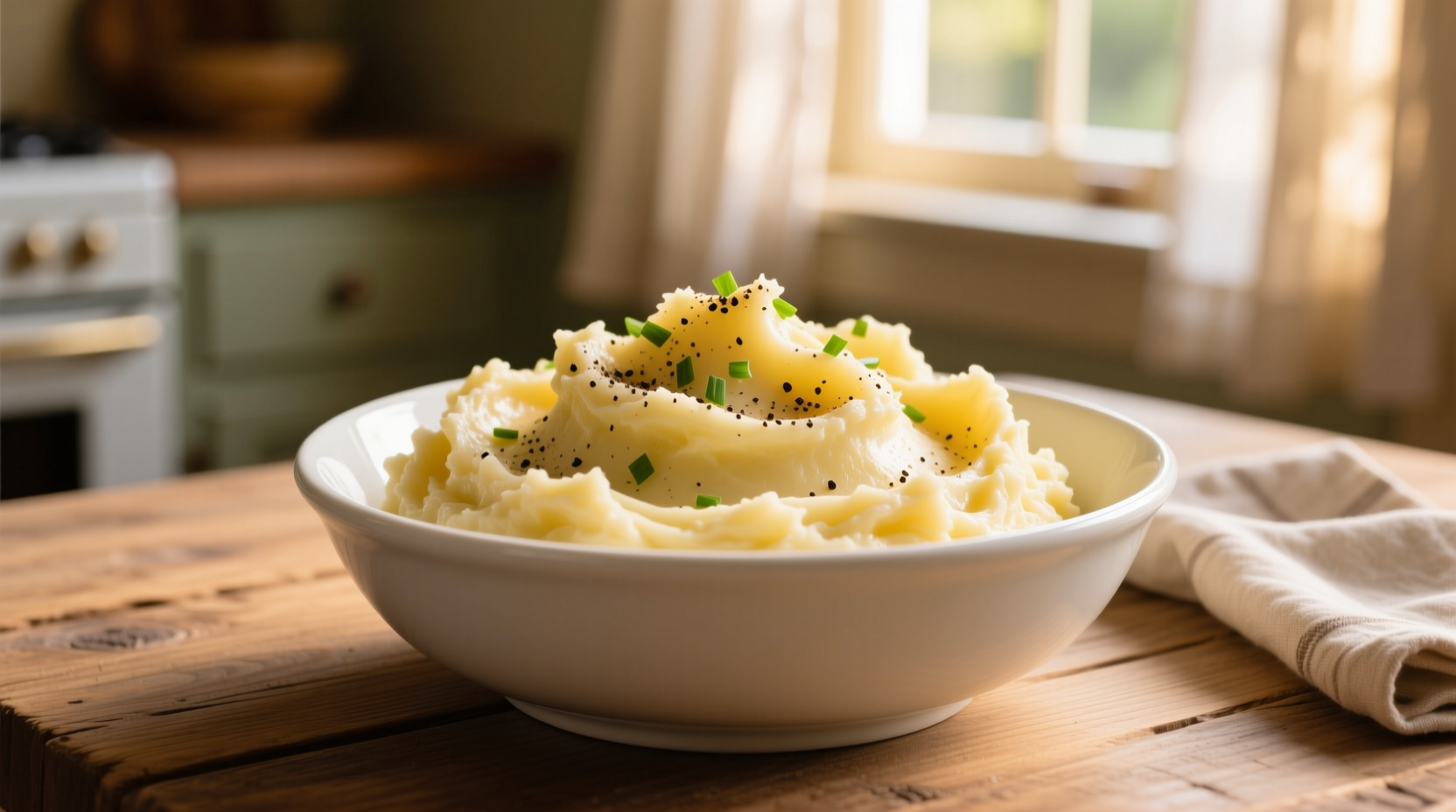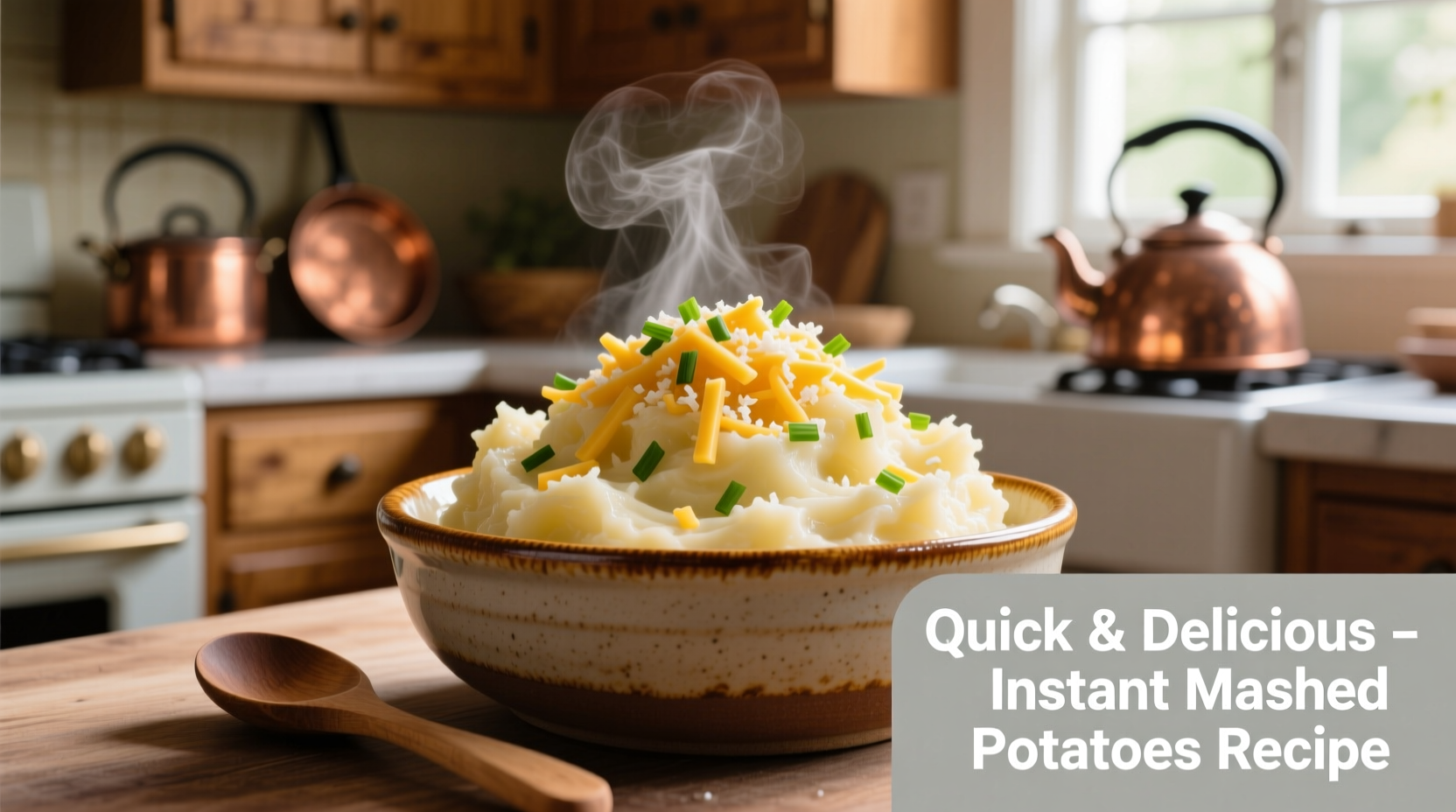When you're craving comforting mashed potatoes but don't have time for peeling and boiling, instant flakes save the day. But too often, the results turn out gluey, watery, or bland. As a chef who's worked in both five-star restaurants and busy family kitchens, I've perfected the technique that transforms basic potato flakes into something extraordinary.
Why Your Instant Mashed Potatoes Fail (And How to Fix It)
The science behind perfect instant mashed potatoes lies in starch management. When potato flakes meet liquid that's too hot or added too quickly, the starches swell unevenly, creating that dreaded gummy texture. Professional kitchens avoid this by controlling three critical factors:
- Liquid temperature - Warm (120-140°F), not boiling
- Hydration ratio - Precise liquid-to-flake measurement
- Resting time - Allowing starches to fully hydrate
| Flake Amount | Liquid Amount | Butter | Result |
|---|---|---|---|
| 1 cup flakes | ⅔ cup warm liquid | 2 tbsp | Ideal texture |
| 1 cup flakes | ½ cup warm liquid | 2 tbsp | Too dry |
| 1 cup flakes | ¾ cup warm liquid | 2 tbsp | Too wet |
Perfect Basic Instant Mashed Potatoes Recipe
This foolproof method creates creamy, fluffy potatoes that taste homemade. The entire process takes just 10 minutes from pantry to plate.
What You'll Need
- 1 cup instant potato flakes (about 2.5 oz)
- ⅔ cup warm liquid (milk, broth, or water)
- 2 tablespoons unsalted butter, cubed
- ¼ teaspoon salt (adjust to taste)
- Pinch of white pepper
Step-by-Step Instructions
- Warm your liquid - Heat milk or broth until warm to the touch (120-140°F), not simmering. Hot liquid causes uneven hydration.
- Combine flakes and salt - In a medium bowl, mix potato flakes, salt, and white pepper.
- Add liquid gradually - Pour half the warm liquid over flakes, stirring with a fork. Wait 2 minutes for initial hydration.
- Add remaining liquid - Stir in remaining liquid until mostly combined (small lumps are okay).
- Add butter off-heat - Fold in butter cubes and let sit covered for 3 minutes. Butter added directly to hot mixture creates greasy separation.
- Fluff gently - Use fork to incorporate butter without overmixing, which releases more starch.

Pro Tips for Restaurant-Quality Results
These professional techniques elevate your instant potatoes from basic to exceptional:
- Use evaporated milk - Its concentrated proteins create richer texture without curdling
- Add potato water - If boiling other potatoes, replace ¼ of liquid with starchy potato water
- Chill your bowl - Cold bowl prevents premature starch activation during mixing
- Rest before serving - 5 minutes covered allows full hydration for consistent texture
When to Choose Instant vs. Fresh Potatoes
Understanding the appropriate context for instant potatoes prevents disappointment. According to culinary research from the Culinary Institute of America, instant flakes excel in specific situations while fresh potatoes remain superior for others:
- Use instant when: Time is limited, consistent texture is critical, or you need reliable results for large batches
- Use fresh when: Distinct potato flavor is the focus, you're making gourmet presentations, or serving to guests with high expectations
- Never use instant for: Dishes requiring distinct potato pieces (like potato salad) or when showcasing heirloom varieties
Popular Flavor Variations
Customize your instant mashed potatoes with these chef-approved additions. Add any of these during the final fluffing stage:
- Cheesy Garlic: ¼ cup shredded sharp cheddar + 1 minced garlic clove (sautéed in butter first)
- Loaded Baked Potato: 2 tbsp sour cream + 2 strips cooked bacon + 1 tbsp chives
- Herb Garden: 1 tbsp fresh chopped herbs (rosemary, thyme, chives) + 1 minced shallot
- Truffle Elegance: ½ tsp truffle oil + 1 tbsp grated Parmesan
Troubleshooting Common Problems
Fix these instant potato issues before they ruin your meal:
- Too watery: Return to heat for 30 seconds while stirring, or add 1 tbsp extra flakes
- Too thick: Add liquid 1 tablespoon at a time until desired consistency
- Lumpy: Pass through fine mesh sieve using rubber spatula
- Bland: Stir in ¼ tsp onion powder or 1 tsp miso paste for umami boost
Storage and Reheating Guidelines
Proper storage maintains texture for leftovers. The USDA recommends:
- Cool completely before refrigerating (within 2 hours of cooking)
- Store in airtight container for up to 3 days
- Reheat with 1-2 tbsp liquid per cup to restore moisture
- Avoid microwaving without covering (creates uneven texture)
Why Instant Potatoes Have Improved Over Time
Modern instant potato flakes have come a long way from their 1950s origins. Food science advancements have dramatically improved quality:
- 1954: First commercial instant potato flakes introduced by U.S. Department of Agriculture
- 1970s: Improved dehydration techniques preserved more natural flavor
- 2000s: Addition of protective starch coatings reduced gumminess
- Today: Many brands use single-origin potatoes with minimal processing
Understanding these developments helps you select better products and adjust techniques accordingly. Higher quality flakes require less liquid and produce more authentic texture.
Final Thoughts
Perfect instant mashed potatoes aren't about hiding the convenience aspect—they're about working with the product's strengths. By controlling liquid temperature, respecting the hydration process, and finishing with proper technique, you can create results that satisfy even discerning palates. Keep this recipe bookmarked for those busy weeknights when comfort food is needed immediately.











 浙公网安备
33010002000092号
浙公网安备
33010002000092号 浙B2-20120091-4
浙B2-20120091-4